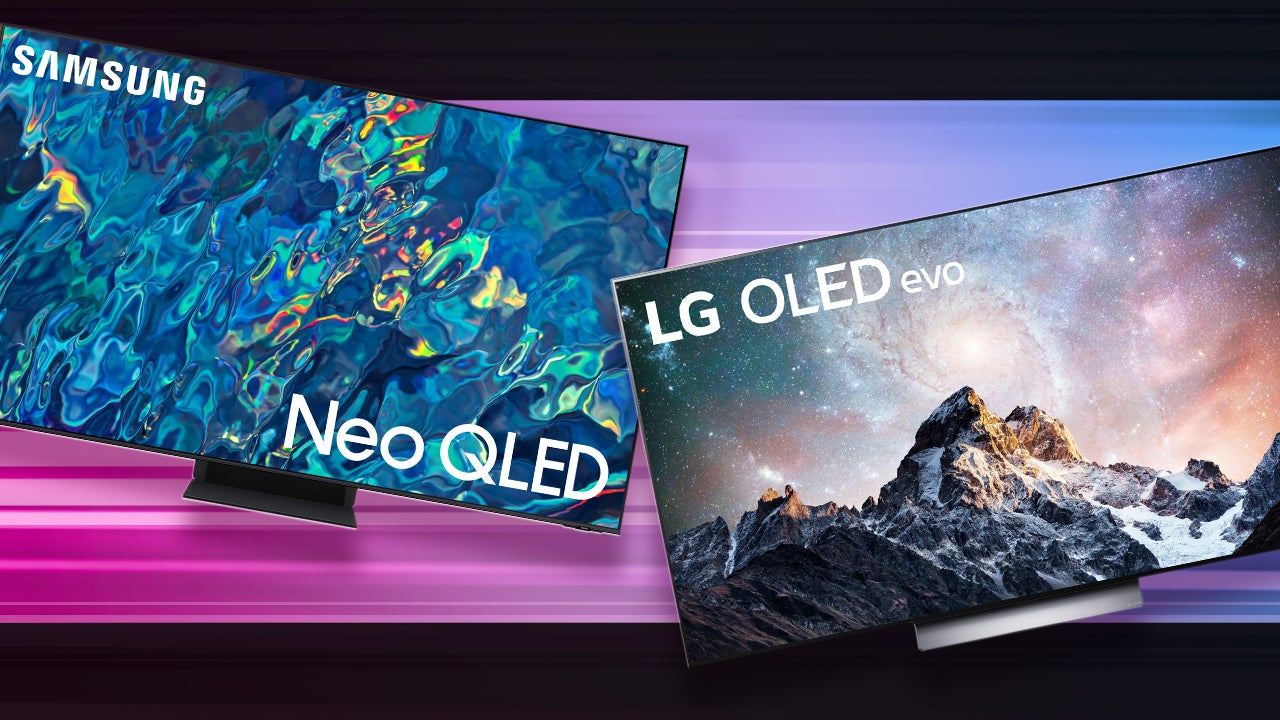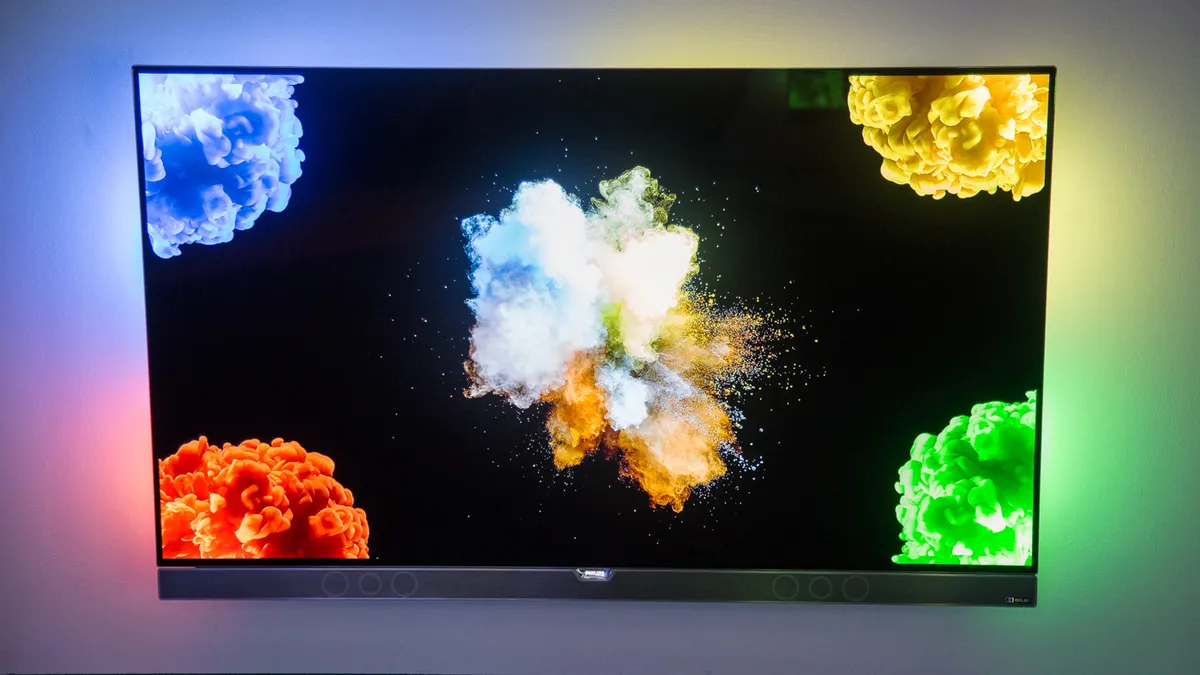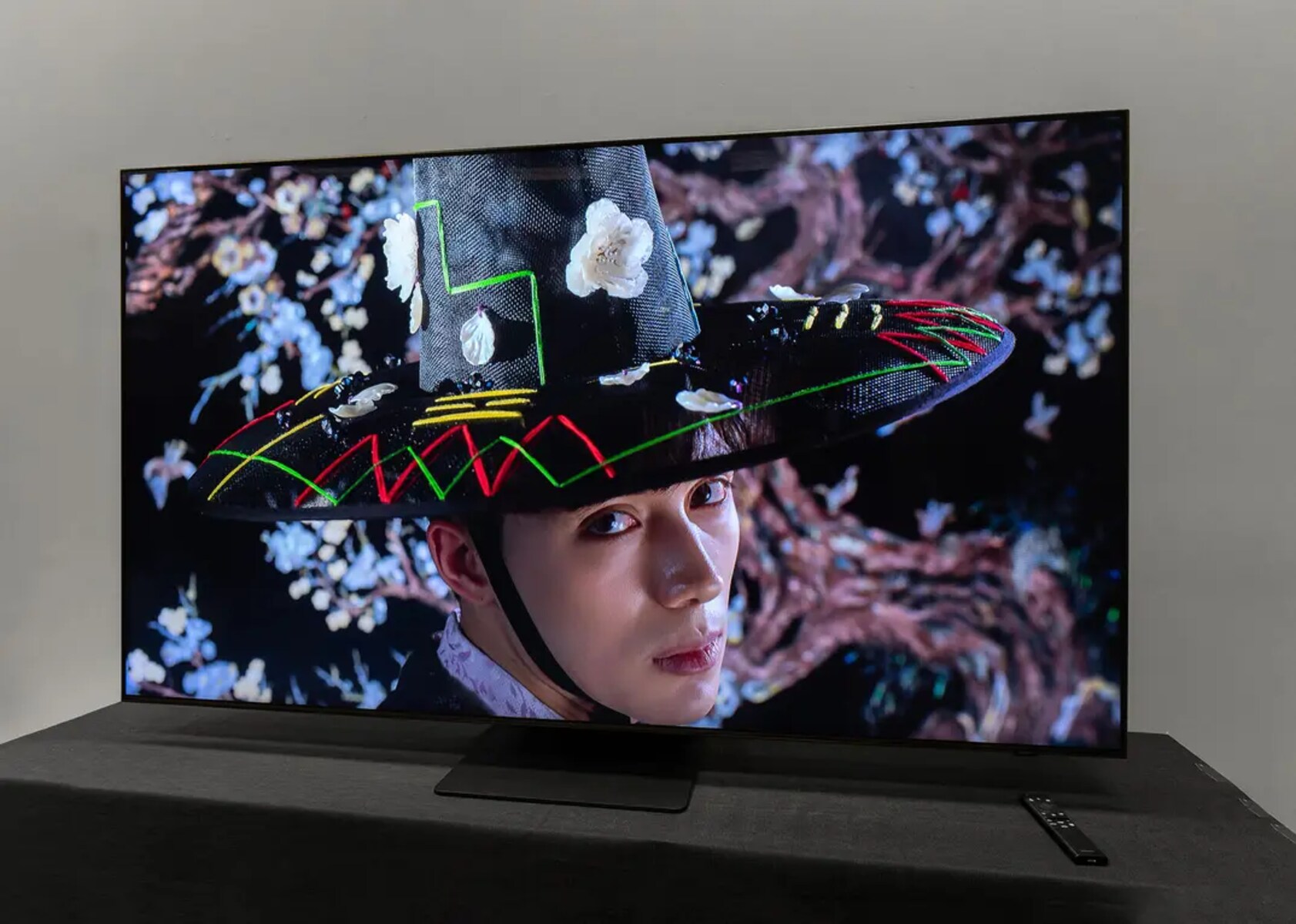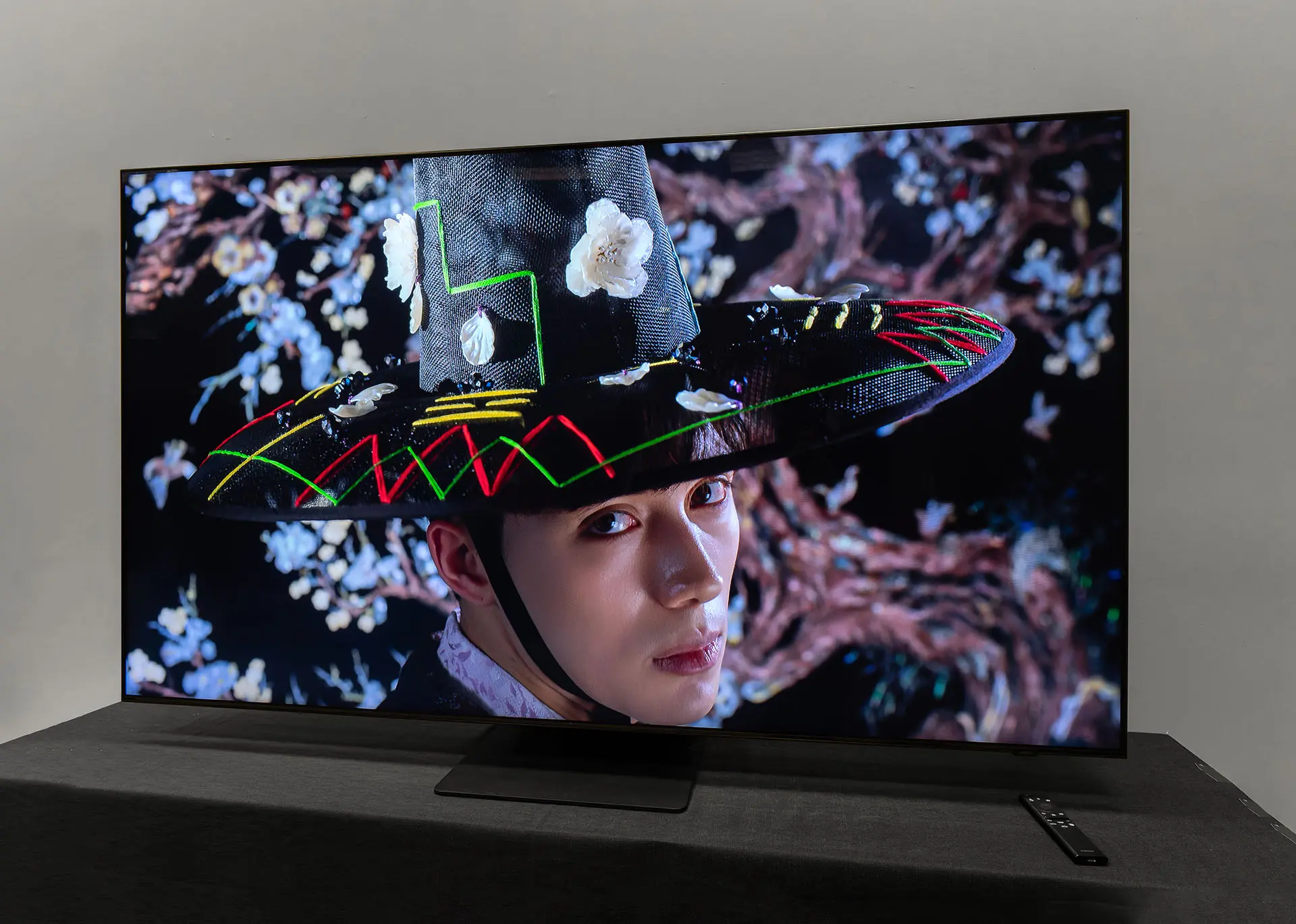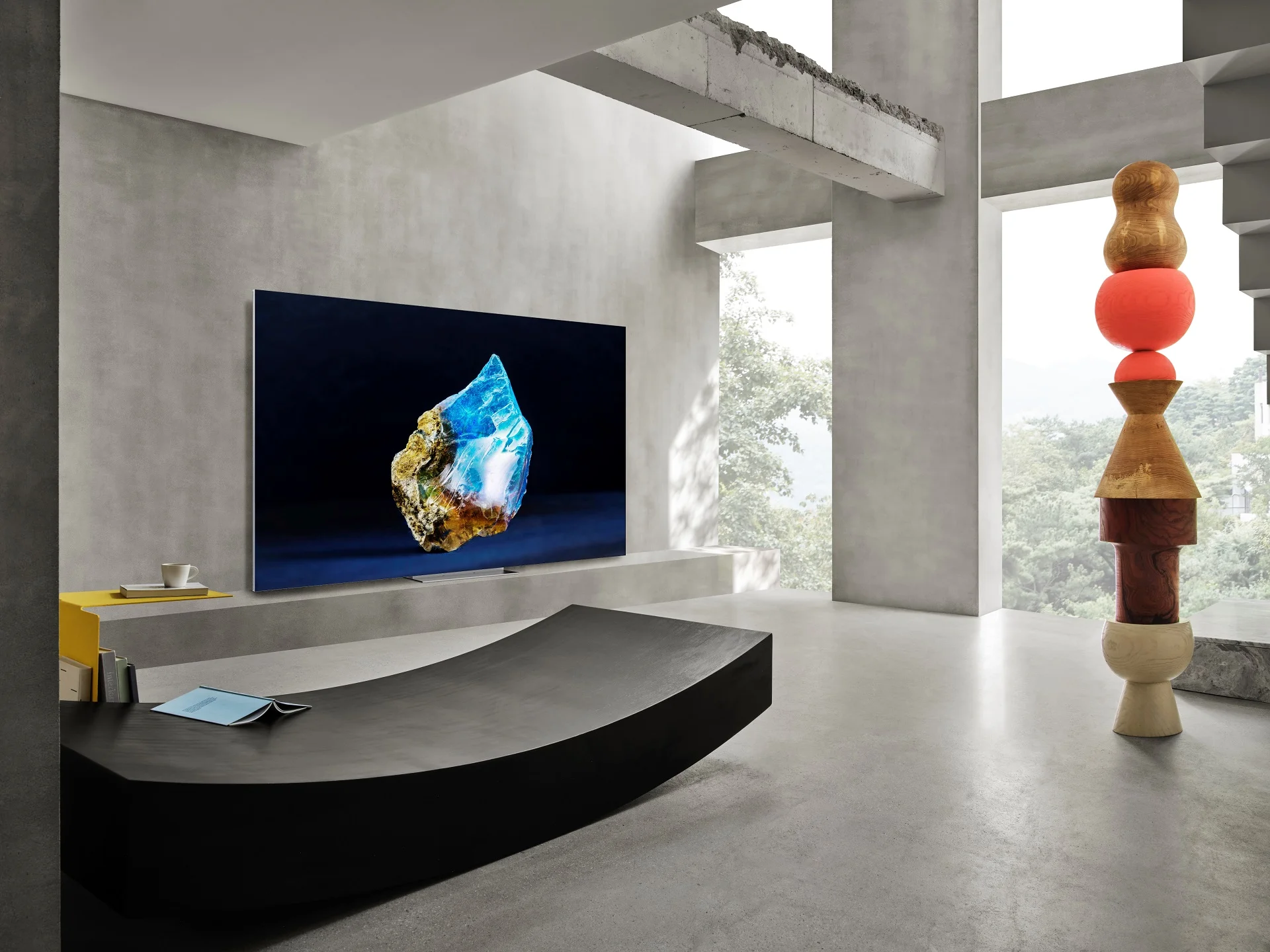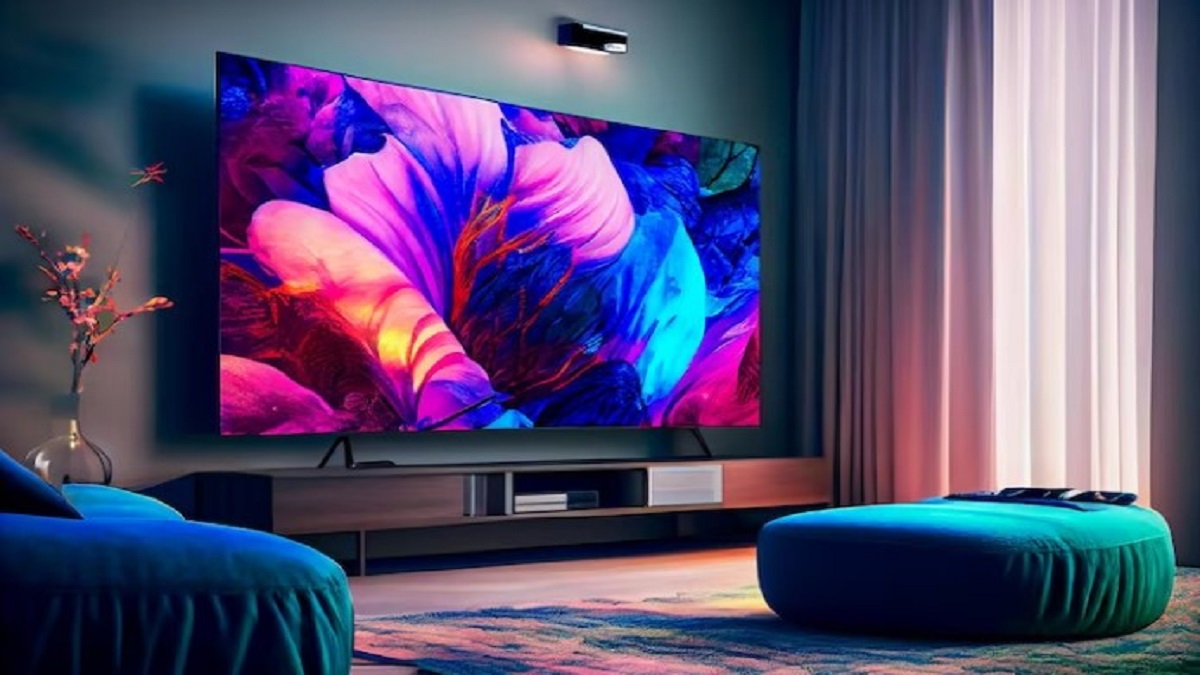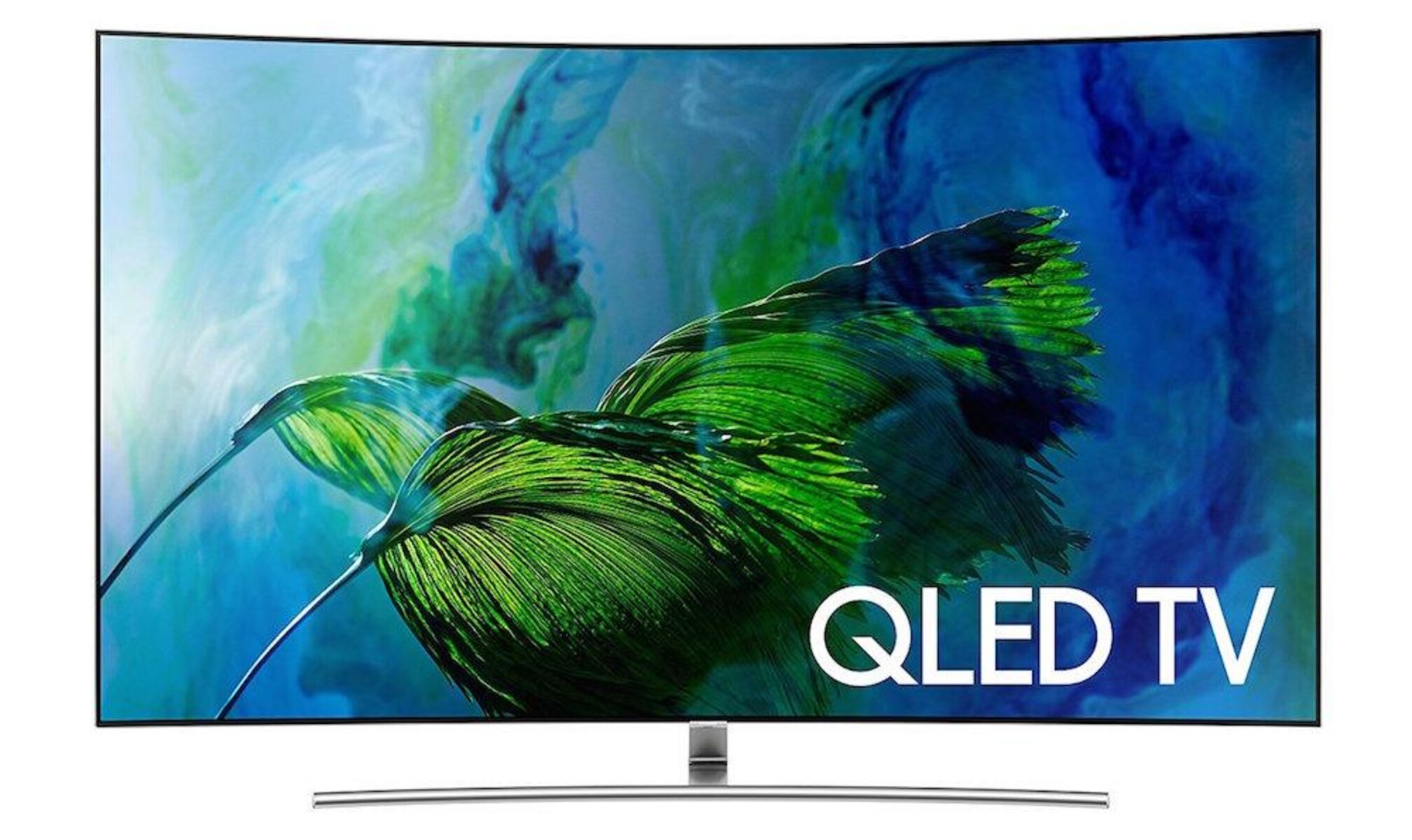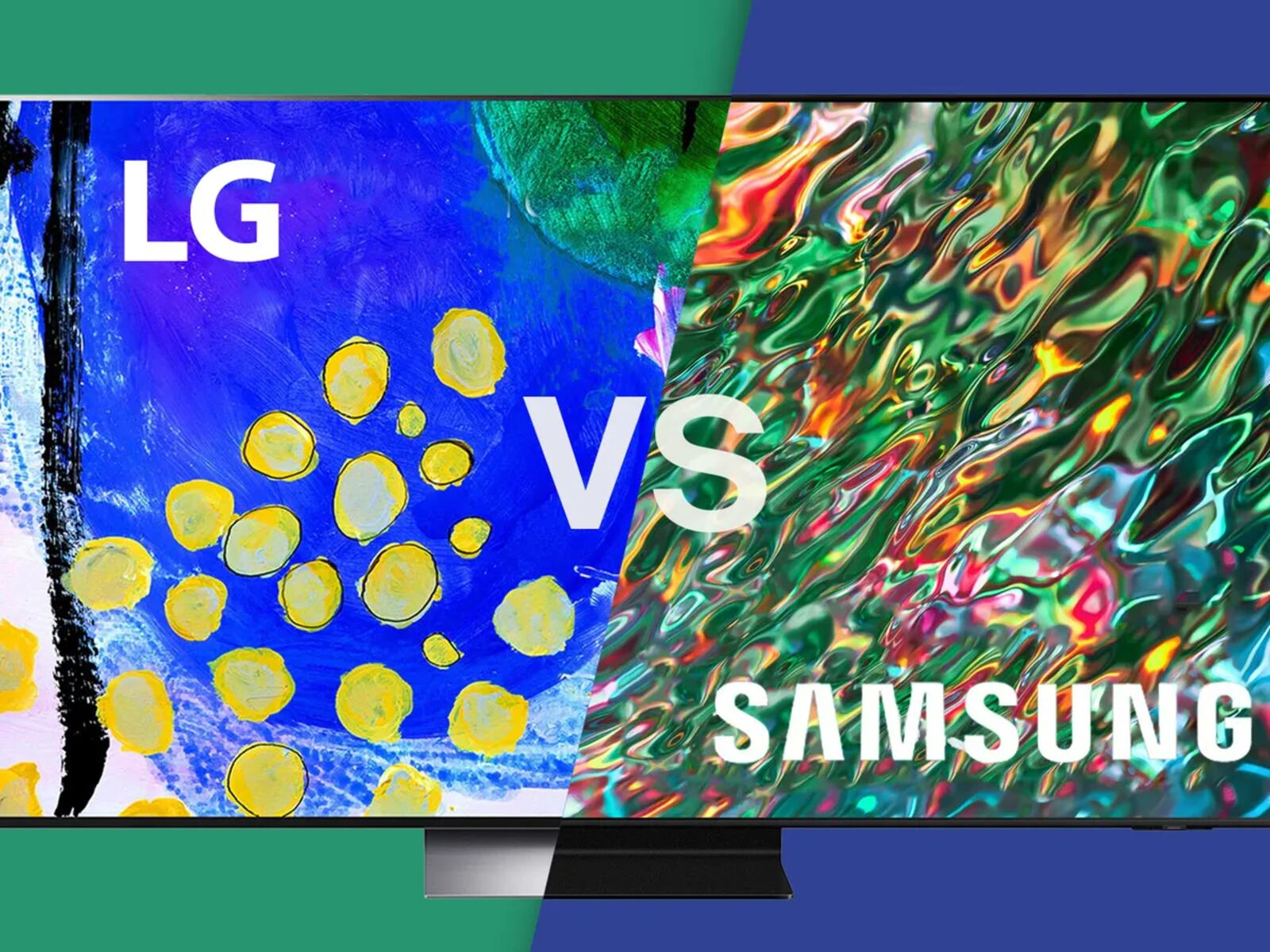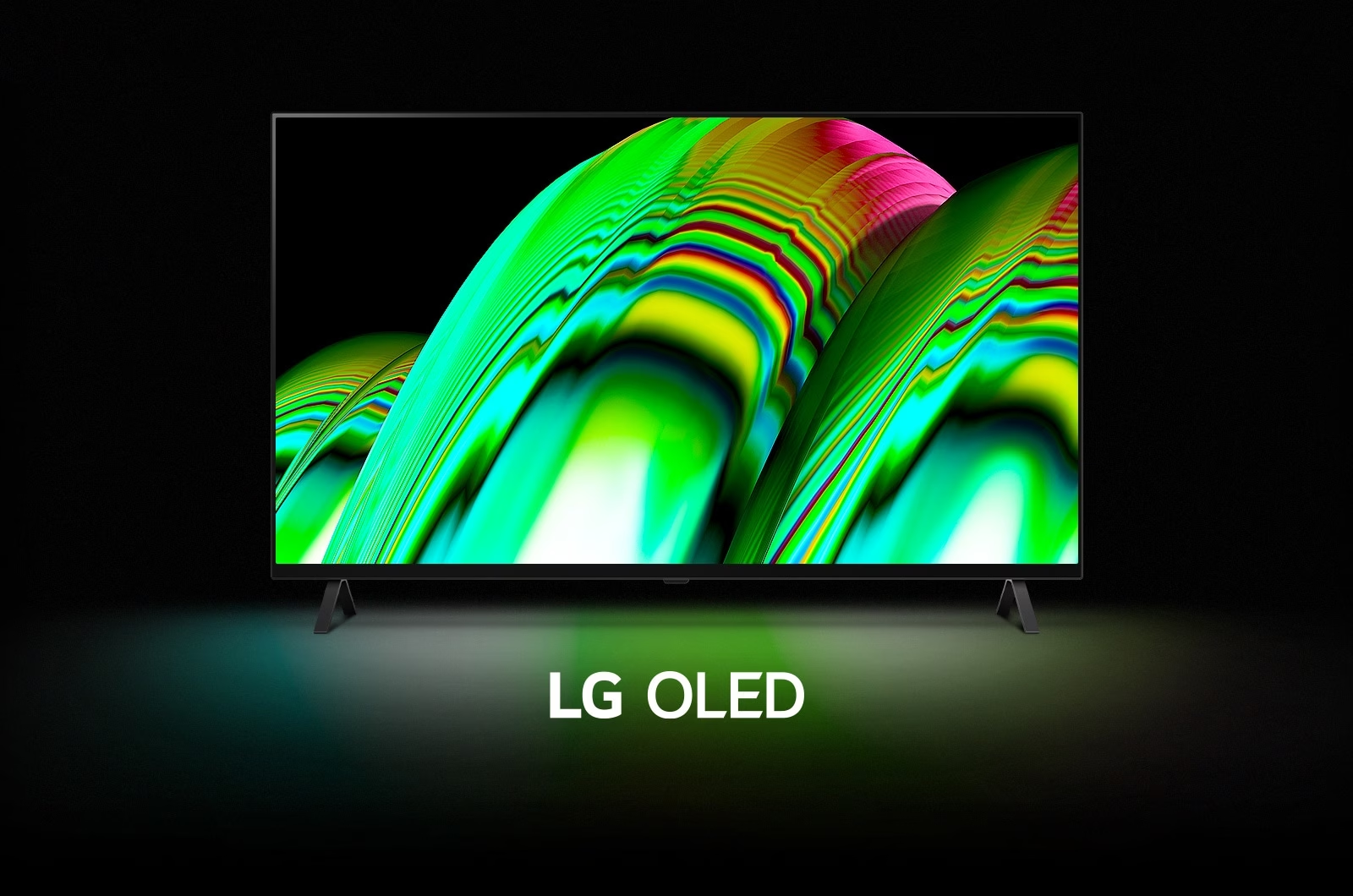Introduction
When it comes to choosing a new TV, the market offers a wide range of options with different technologies and features. Two popular contenders in the high-end television segment are QLED (Quantum Light Emitting Diode) and OLED (Organic Light Emitting Diode) TVs. Both QLED and OLED TVs are renowned for their exceptional picture quality and cutting-edge technology. However, understanding the differences between the two can help you make an informed decision.
QLED TVs are powered by Quantum Dot technology, which uses tiny semiconductor nanocrystals to enhance the brightness and color range. On the other hand, OLED TVs use individual pixels that emit their own light, resulting in remarkable contrast and impressive black levels. The battle between QLED and OLED TVs has been fiercely debated among tech enthusiasts.
So, which one is better: QLED TV or OLED TV? In this article, we will delve into the key differences between QLED and OLED TVs, exploring their display technology, picture quality, contrast ratio, color accuracy, viewing angle, response time, refresh rate, brightness, energy efficiency, and price to help you make the right choice for your home entertainment.
What is QLED TV?
QLED TV is a type of television that utilizes Quantum Dot technology to enhance the viewing experience. Quantum Dots are tiny nanocrystals made of semiconductor materials that emit different colors of light when illuminated by a backlight source.
In a QLED TV, the Quantum Dots are positioned in a layer between the LED backlight panel and the LCD (Liquid Crystal Display) panel. The LED backlight provides the necessary illumination while the Quantum Dots filter the light produced to create a wider color gamut.
One of the key advantages of QLED TV is its ability to deliver vibrant and accurate colors. The Quantum Dots can produce a wide range of colors, including deep blacks and bright whites. This results in vivid and lifelike images, making it ideal for watching movies, sports, and other multimedia content.
Another notable feature of QLED TVs is their ability to achieve higher brightness levels compared to other TV technologies. The Quantum Dots in QLED TVs can generate intense light output, which enhances the overall picture quality, especially in well-lit rooms or when watching HDR (High Dynamic Range) content that requires high levels of brightness.
Furthermore, QLED TVs often come equipped with advanced features such as local dimming, which allows for better control of the backlighting to enhance contrast and improve black levels. This results in more detailed and immersive visuals, particularly in scenes with a mix of bright and dark areas.
QLED TVs also boast impressive viewing angles, ensuring that the picture quality remains consistent even when viewed from different positions in the room. This makes it ideal for large gatherings or living rooms with multiple seating areas.
In terms of durability, QLED TVs are known for their long lifespan and resistance to burn-in, a common issue with OLED TVs. Burn-in occurs when static images are displayed for extended periods, causing the images to “ghost” and leave a permanent mark on the screen. QLED TVs are less susceptible to this issue due to the nature of the Quantum Dot technology.
In summary, QLED TVs offer vibrant colors, high brightness levels, impressive viewing angles, and enhanced longevity. These features make them a popular choice for consumers looking for a TV that delivers excellent picture quality and durability.
What is OLED TV?
OLED TV, which stands for Organic Light Emitting Diode TV, is a type of television that utilizes organic compounds to emit light. Unlike traditional LCD TVs that rely on a backlight, each pixel in an OLED TV is self-emissive, meaning it individually emits light.
This revolutionary technology allows OLED TVs to achieve unparalleled picture quality, with exceptional contrast and deep blacks. Since each pixel can turn on or off independently, OLED TVs can produce true blacks, as the pixels emit no light when turned off. This creates a level of contrast that LCD and QLED TVs struggle to replicate.
Another significant advantage of OLED technology is its ability to produce incredibly vibrant and accurate colors. Since each pixel generates its own light, there is no need for a backlight or color filters like in traditional LCD TVs. This results in more precise color reproduction, making images appear more lifelike and immersive.
OLED TVs also have a wide viewing angle, meaning the picture quality remains consistent even when viewed from different positions in the room. This makes OLED TVs a perfect choice for those who often watch TV with others or have multiple seating areas in their living spaces.
In addition to its superior picture quality, OLED technology offers fast response times, virtually eliminating motion blur. This is particularly advantageous for fast-paced content, such as action movies or sports events, where smooth and sharp visuals are essential.
It is worth mentioning that OLED TVs are incredibly thin and lightweight. This is because the technology does not require a separate backlight layer, allowing for a sleek and minimalist design. OLED TVs often have slim profiles and can be easily mounted on walls, providing a modern and elegant aesthetic to any room.
However, it is important to note that OLED TVs are more prone to burn-in compared to other display technologies. Burn-in occurs when static images are displayed for extended periods, causing them to “ghost” and leave a permanent mark on the screen. To minimize the risk, it is recommended to vary content and avoid displaying static images for long periods of time.
In summary, OLED TVs offer exceptional picture quality, with deep blacks, vibrant colors, and wide viewing angles. Their slim and stylish design adds a touch of elegance to any room. While burn-in can be a concern, OLED TVs remain a top choice for those seeking a visually stunning and immersive TV viewing experience.
Display Technology Comparison
When comparing QLED and OLED TVs, one of the crucial aspects to consider is the display technology they employ. QLED TVs use Quantum Dot technology, whereas OLED TVs use Organic Light Emitting Diode technology. Let’s dive deeper into the differences between these two display technologies.
QLED TVs utilize Quantum Dot technology, which involves placing a layer of tiny semiconductor nanocrystals known as Quantum Dots between the LED backlight panel and the LCD panel. The Quantum Dots filter and enhance the light produced by the backlight, resulting in a wider color gamut and improved color accuracy. This technology allows QLED TVs to deliver vibrant and vivid colors with great precision.
On the other hand, OLED TVs use self-emissive Organic Light Emitting Diodes, where each individual pixel generates its own light. When a pixel is turned off, it emits no light, resulting in true blacks and excellent contrast. This technology provides OLED TVs with unparalleled picture quality, as they can achieve infinite contrast ratios and remarkable color accuracy.
In terms of brightness, QLED TVs have an advantage. Quantum Dots in QLED TVs can generate high levels of brightness, making them ideal for well-lit rooms or HDR content that requires vivid highlights. On the other hand, OLED TVs cannot reach the same peak brightness levels as QLED TVs, although they excel in black levels and contrast.
Another important factor to consider is viewing angles. OLED TVs have wide viewing angles, meaning that the picture quality remains consistent even when viewed from off-center positions. This makes OLED TVs suitable for larger rooms or when multiple people are watching from different angles. QLED TVs, while they have improved in this aspect, still have slightly narrower viewing angles compared to OLED TVs.
When it comes to response time, OLED TVs have the upper hand. Each pixel can turn on or off almost instantaneously, resulting in minimal motion blur. This makes OLED TVs ideal for watching fast-paced action scenes or playing video games that require quick reactions. QLED TVs, while they have made advancements in reducing motion blur, may still exhibit slight blurring during fast-paced content.
Lastly, in terms of design, OLED TVs have an advantage. Due to the nature of the technology, OLED TVs can be incredibly slim and lightweight, allowing for sleek and modern designs. QLED TVs, although they have become thinner over the years, may still have a slightly thicker profile compared to OLED TVs.
In summary, QLED TVs offer vibrant and accurate colors, high brightness levels, and improved viewing angles. OLED TVs, on the other hand, provide unparalleled picture quality with infinite contrast ratios and fast response times. Consider your priorities in terms of brightness, contrast, viewing angles, and response time to make an informed decision.
Picture Quality Comparison
When it comes to picture quality, both QLED and OLED TVs offer exceptional visuals, but there are some key differences to consider. Let’s compare the picture quality of QLED and OLED TVs.
QLED TVs, with their Quantum Dot technology, excel in producing vibrant and accurate colors. The Quantum Dots in QLED TVs can create a wide color gamut, resulting in vivid and lifelike images. This technology allows QLED TVs to reproduce a vast range of hues with great precision, making them suitable for enjoying movies, sports, and other multimedia content with stunning color accuracy.
On the other hand, OLED TVs are acclaimed for their unmatched contrast and deep blacks. Each pixel in an OLED TV generates its own light, and when a pixel is turned off, it emits no light, resulting in true blacks. This creates a tremendous contrast between dark and bright areas on the screen. OLED TVs also offer exceptional shadow detail, allowing for a more immersive viewing experience, especially in content with dark scenes or nighttime settings.
While QLED TVs can achieve impressive brightness levels, OLED TVs cannot reach the same peak brightness due to the limitations of the organic materials used in their display technology. However, OLED TVs make up for this by their ability to display fine details in dark scenes without sacrificing brightness in other areas of the screen. This allows for a more balanced image with excellent picture quality.
Another aspect to consider is HDR (High Dynamic Range) content. Both QLED and OLED TVs support HDR, which enhances the dynamic range and provides more vivid and lifelike visuals. QLED TVs, with their high brightness capabilities, can deliver striking highlights in HDR content. OLED TVs, on the other hand, excel in reproducing deep blacks and shadow details, resulting in a more nuanced and realistic HDR experience.
Additionally, the wide viewing angles of OLED TVs contribute to their superior picture quality. OLED panels offer consistent colors and contrast even when viewed from off-center positions, ensuring that everyone in the room can enjoy an immersive visual experience without any loss in quality.
In summary, while QLED TVs excel in vibrant colors and high brightness levels, OLED TVs offer unparalleled contrast with deep blacks and exceptional shadow detail. With their ability to reproduce true blacks and wide viewing angles, OLED TVs provide a more immersive and visually stunning picture quality. Consider your preferences in terms of color accuracy, contrast, and viewing angles when choosing between QLED and OLED TVs.
Contrast Ratio Comparison
When it comes to contrast ratio, OLED TVs have a clear advantage over QLED TVs due to the fundamental differences in their display technologies.
Contrast ratio is the difference between the darkest and brightest areas of an image. It is a crucial factor in determining the depth and visual impact of the picture. OLED TVs, with their self-emissive pixels, can achieve infinite contrast ratios. When a pixel is turned off, it emits no light, resulting in true blacks. This creates a stark contrast between the dark and bright elements on the screen, enhancing the overall visual experience.
QLED TVs, on the other hand, rely on LED backlighting and Quantum Dot technology to produce the image. While Quantum Dots can enhance the color and brightness, they cannot completely eliminate the light leakage from the backlight, resulting in limited contrast ratios compared to OLED TVs.
With OLED technology, each individual pixel can be turned off independently, allowing for precise control of light emission. This enables OLED TVs to display true blacks, where the pixels emit no light, and maintain bright highlights simultaneously. This dynamic contrast range provides a more realistic and immersive viewing experience, especially in dark scenes or content with high contrast.
In contrast, QLED TVs can have impressive brightness levels, which can be advantageous for displaying bright highlights in certain content or well-lit environments. However, due to the limitations of the LED backlight and the filtering process of Quantum Dots, the black levels achieved by QLED TVs cannot match the deep blacks produced by OLED TVs.
It is important to note that an exceptional contrast ratio contributes to overall image quality, enhancing the sense of depth and sharpness. With OLED TVs, the deep blacks allow for better shadow details and improved color accuracy in dark scenes. The ability to present details in both dark and bright areas simultaneously enhances the overall visual experience and creates a more immersive and lifelike image on the screen.
In summary, due to their self-emissive pixel technology, OLED TVs offer an infinite contrast ratio, providing true blacks and exceptional shadow detail. QLED TVs, while they can achieve impressive brightness levels, cannot match the deep blacks and dynamic contrast range of OLED TVs. If achieving striking contrast and optimal black levels are important factors for you, OLED TVs are the ideal choice.
Color Accuracy Comparison
Color accuracy is a critical aspect of picture quality, and both QLED and OLED TVs strive to deliver vibrant and accurate colors. However, there are some distinctions in how each technology achieves color accuracy.
QLED TVs utilize Quantum Dot technology, which allows for a wide color gamut and improved color reproduction. Quantum Dots are tiny nanocrystals that can emit light of highly specific colors when illuminated by a backlight. With the help of Quantum Dots, QLED TVs can produce a diverse range of hues, resulting in vibrant and vivid colors on the screen.
On the other hand, OLED TVs offer exceptional color accuracy due to the nature of their self-emissive technology. Each individual pixel in an OLED display generates its own light, eliminating the need for a separate backlight or color filters. This results in more precise color reproduction, as there is no risk of light bleeding or color distortion caused by filters.
OLED TVs can achieve true blacks, allowing for better contrast and color rendition. The absence of any light leakage from turned-off pixels ensures that the colors are rendered with optimal accuracy and purity. This enables OLED TVs to reproduce subtle details and nuances in colors that may be missed in other display technologies.
While QLED TVs can deliver a wide color gamut with Quantum Dot technology, there can be some slight deviations in color accuracy due to the nature of LCD panels and the filtering process used to create the wide color range. However, advancements have been made in QLED technology to improve color accuracy, offering more precise and realistic color reproduction.
It is also important to consider calibration options. Both QLED and OLED TVs provide calibration features, allowing users to adjust the color settings to their preference or to match industry-standard color spaces. Calibration can help fine-tune the color accuracy and ensure that the TV displays colors as intended by content creators.
Overall, OLED TVs offer exceptional color accuracy, thanks to their self-emissive pixels and ability to achieve true blacks. QLED TVs, with their Quantum Dot technology, can also provide vibrant and accurate colors, although there may be slight differences in color accuracy due to the LCD panel and filtering process. Consider the importance of precise color reproduction when making your decision between QLED and OLED TVs.
Viewing Angle Comparison
Viewing angle refers to the angle at which you can comfortably watch the TV without experiencing a loss in picture quality. Both QLED and OLED TVs have made significant advancements in this area, offering improved viewing angles compared to older technologies like LCD.
OLED TVs are known for their impressive viewing angles. Each pixel in an OLED display generates its own light, which means that the image remains consistent regardless of the viewer’s position. This makes OLED TVs ideal for larger rooms or when multiple people are watching the screen from different angles. Whether you’re sitting directly in front of the TV or viewing from the side, the picture quality will remain vibrant and accurate.
QLED TVs have also made strides in improving viewing angles. However, due to the nature of their LCD panels and filtering process, there may still be some slight loss in color saturation and contrast when viewing the TV from off-center positions. This is more noticeable when viewing at extreme angles or sitting very close to the TV. As a result, QLED TVs may be better suited for smaller rooms or when the seating arrangement allows for a more direct and central viewing position.
It is important to note that the viewing angle performance of QLED and OLED TVs can vary depending on the specific model and manufacturer. Some QLED TVs now feature advanced technology like wide-angle quantum dot layers or improved optical films, which further enhance their viewing angles and reduce color shifting.
When comparing QLED and OLED TVs in terms of viewing angles, OLED TVs generally offer a wider and more consistent viewing experience. Their ability to maintain color accuracy and contrast at various angles means that everyone in the room can enjoy an immersive visual experience without any loss in quality. However, if your viewing setup primarily consists of direct and centered seating positions, the narrower viewing angles of QLED TVs may not be a significant concern.
In summary, OLED TVs provide consistent picture quality and color accuracy across a wide range of viewing angles, making them ideal for larger rooms or when multiple viewers are present. QLED TVs have improved their viewing angles but may exhibit slight color shifts when viewed from off-center positions. Consider the viewing arrangement in your room and the seating positions to determine the impact of viewing angles on your TV-watching experience.
Response Time Comparison
Response time is the measure of how quickly a pixel can change from one color to another. It plays a critical role in reducing motion blur, especially during fast-paced scenes in movies or sports. When comparing QLED and OLED TVs, their response times exhibit some variations due to differences in display technology.
OLED TVs have an advantage in terms of response time. Each pixel in an OLED display can turn on or off almost instantaneously. This quick response time ensures that there is minimal motion blur, resulting in sharp and smooth visuals. It is particularly beneficial for fast-action content, such as action movies, sports events, or video games where rapid movement is involved.
On the other hand, QLED TVs have made significant progress in reducing response times compared to older LCD-based technologies. However, slight motion blur might still be noticeable due to the limitations of LCD panels. The response time of QLED TVs can vary depending on the specific model and manufacturer, with some models offering faster response times than others.
It is important to note that the response time requirements can vary depending on individual preferences and sensitivity to motion blur. Some viewers may be more sensitive to motion blur and may derive a significant benefit from the faster response time of OLED TVs. Others may not notice or be bothered by the slight motion blur in QLED TVs.
Response time performance is particularly important for gamers who require quick and precise visual feedback. OLED TVs, with their fast response times, are often favored by gaming enthusiasts as they can provide a more responsive and immersive gaming experience with minimal blurring and ghosting effects.
In summary, OLED TVs offer impressively fast response times, practically eliminating motion blur and ensuring smooth and sharp visuals. QLED TVs have improved their response times, but there may still be slight motion blur due to the limitations of LCD panels. Consider your sensitivity to motion blur and the importance of response time, especially if you are a gaming enthusiast, when deciding between QLED and OLED TVs.
Refresh Rate Comparison
Refresh rate refers to the number of times per second that a TV can refresh its image. It is measured in Hertz (Hz) and plays a crucial role in determining the smoothness of motion on the screen. Both QLED and OLED TVs offer different refresh rate capabilities, which can impact the viewing experience.
QLED TVs typically have higher refresh rates compared to OLED TVs. Many QLED TVs offer a native refresh rate of 120Hz or even higher. A higher refresh rate allows for smoother motion on the screen, reducing motion blur and providing a more fluid viewing experience. This enhanced smoothness is especially valued in fast-paced content such as action movies, sports, or video games.
OLED TVs traditionally have lower native refresh rates, often ranging from 60Hz to 120Hz. However, it is important to note that OLED TVs are capable of achieving excellent motion handling despite their lower refresh rates. This is attributed to the fast response time of OLED pixels, effectively minimizing motion blur and maintaining clarity in fast-moving scenes.
Both QLED and OLED TVs often offer additional motion enhancement technologies to further improve the viewing experience. QLED TVs may feature motion interpolation or backlight scanning techniques, which create the illusion of higher frame rates and smoother motion. OLED TVs, with their fast pixel response time, can naturally handle motion well without the need for extensive motion enhancement technologies.
It is worth mentioning that the source content being viewed also plays a role in the perceived benefits of higher refresh rates. While higher refresh rates can contribute to smoother motion, not all content is filmed or encoded at such high frame rates. Most movies, TV shows, and standard video content are generally filmed at 24 or 30 frames per second (fps), so any improvement in motion smoothness may be less noticeable compared to content specifically shot at higher frame rates.
In summary, QLED TVs typically offer higher native refresh rates, allowing for smoother motion on the screen, which can be particularly beneficial for fast-paced content. OLED TVs have lower native refresh rates but excel in motion handling due to their fast pixel response time. Consider your preferences for motion smoothness and the type of content you primarily watch when considering the refresh rate capabilities of QLED and OLED TVs.
Brightness Comparison
Brightness is an important factor in determining the visual impact and clarity of the picture displayed on a TV. Both QLED and OLED TVs offer different levels of brightness, which can significantly affect the viewing experience in various lighting conditions.
QLED TVs have an advantage when it comes to brightness. The Quantum Dot technology in QLED TVs allows them to achieve higher peak brightness levels compared to OLED TVs. This high brightness capability is particularly beneficial in well-lit rooms or when watching HDR (High Dynamic Range) content that requires vivid highlights.
With their ability to reach high brightness levels, QLED TVs can provide a more impactful viewing experience in scenes with intense light or when displaying bright objects, such as a sunny sky or sparkling water. The extra brightness can make colors and details pop, enhancing the overall visual quality.
On the other hand, OLED TVs cannot reach the same peak brightness levels as QLED TVs due to the nature of their display technology. OLED TVs rely on individual pixels emitting light, which limits their overall brightness output. While OLED TVs may have lower peak brightness, they excel in other areas such as contrast ratio, black levels, and color accuracy.
It is important to note that in dark scenes or content with significant contrast between light and dark areas, OLED TVs perform exceptionally well. Due to their ability to produce true blacks, OLED TVs can simultaneously display bright highlights and deep shadows, resulting in more nuanced and realistic visuals.
Another consideration when comparing brightness is the viewing environment. If you primarily watch TV in a well-lit room or have large windows that allow natural light to enter, a QLED TV with its higher brightness capability may be a suitable choice. However, if you have control over the lighting conditions or watch TV mostly in a dimly lit environment, an OLED TV’s superior contrast and black levels can provide a more immersive and cinematic experience.
In summary, QLED TVs offer higher peak brightness levels, making them ideal for well-lit rooms and HDR content with vivid highlights. OLED TVs, while not as bright, excel in contrast ratio and black levels, delivering exceptional picture quality in dark scenes. Consider the lighting conditions of your viewing environment and your preference for brightness versus contrast when selecting between QLED and OLED TVs.
Energy Efficiency Comparison
Energy efficiency is an important consideration when choosing a TV, both for environmental sustainability and cost-saving reasons. When comparing QLED and OLED TVs in terms of energy efficiency, there are some key differences to consider.
QLED TVs are generally more energy-efficient compared to older LCD TVs due to advancements in technology. The use of Quantum Dot technology, along with improvements in backlighting and panel design, allows QLED TVs to deliver brighter images with less power consumption. This means that QLED TVs can provide a visually impressive viewing experience while consuming less energy.
Additionally, many QLED TVs now come equipped with advanced energy-saving features and settings that further optimize power consumption. These features can include automatic brightness adjustment based on ambient light conditions, motion sensors to detect viewer presence, and power-saving modes when the TV is not in use.
On the other hand, OLED TVs tend to consume more power compared to QLED TVs. This is primarily due to the nature of OLED technology, as each pixel in an OLED display generates its own light. Since OLED TVs do not require a separate backlight, they can consume less power in dark scenes or when displaying predominantly black content. However, OLED TVs may consume more power when displaying bright or white content because each pixel needs to emit light.
It’s worth noting that the energy consumption of TVs can vary depending on the manufacturer, model, size, and specific settings used. It is advisable to look for TVs with energy efficiency certifications such as Energy Star, as these indicate that the TVs adhere to strict energy-saving standards and guidelines.
In summary, QLED TVs are generally more energy-efficient compared to OLED TVs due to advancements in technology and power-saving features. However, energy consumption can vary depending on usage patterns, content displayed, and specific TV models. If energy efficiency is a crucial factor for you, consider the specifications, energy-saving features, and certifications of the specific QLED or OLED TVs you’re considering to make an informed decision.
Price Comparison
Price is an essential factor to consider when deciding between QLED and OLED TVs. Both technologies represent the higher end of the TV market, but there are differences in pricing to be aware of.
In general, QLED TVs tend to have a lower price point compared to OLED TVs. This is largely due to the difference in manufacturing costs and the availability of the technologies. QLED TVs have been in the market for a longer time and have a more established production infrastructure, resulting in economies of scale that can lower costs.
On the other hand, OLED TVs are still considered a premium technology with a higher cost of manufacturing. The complex process of manufacturing OLED panels and the limited number of manufacturers contribute to the higher price tag. OLED panels require specialized production facilities and strict quality control measures, which can drive up the cost of the final product.
However, it is important to note that the price difference between QLED and OLED TVs has been decreasing over the years. As OLED production technology improves and competition increases, the price gap between the two technologies is narrowing. This has made OLED TVs more accessible to a wider range of consumers.
When considering the price of a TV, it is also essential to take into account factors such as screen size, resolution, brand reputation, and additional features. Larger screen sizes and higher display resolutions typically come with a higher price tag, regardless of the underlying technology.
Furthermore, different manufacturers offer TVs at varying price points within both QLED and OLED categories. Some brands may have premium offerings with higher prices, while others may offer more affordable options without compromising on quality.
In summary, QLED TVs generally have a lower price point compared to OLED TVs. However, the price difference between the two technologies has been reducing over time, making OLED TVs more accessible to a wider range of consumers. Consider your budget, desired screen size, resolution, and brand preferences to find the best value for your money within the QLED and OLED TV segments.
Conclusion
Choosing between a QLED and an OLED TV ultimately depends on your preferences and specific needs. Both technologies offer outstanding picture quality and advanced features, but they have distinct characteristics that set them apart.
QLED TVs, with their Quantum Dot technology, deliver vibrant colors, high brightness levels, and impressive viewing angles. They excel in rooms with ample lighting and are well-suited for those who prioritize brightness, color accuracy, and a wide color gamut. QLED TVs are also a popular choice for gamers due to their fast response times and motion handling capabilities.
OLED TVs, on the other hand, offer unparalleled contrast ratios, deep blacks, and exceptional color accuracy. Each pixel generates its own light, resulting in a stunning level of contrast and precise color reproduction. OLED TVs are an excellent choice for those who value superior picture quality, immersive dark room experiences, and wide viewing angles.
Other factors to consider include energy efficiency, price, and the overall viewing environment. QLED TVs are typically more energy-efficient and come with a lower price tag, while OLED TVs offer better contrast ratios but may consume more power. It is also important to take into account the lighting conditions of your viewing space and the size of the room.
Ultimately, the decision between QLED and OLED TVs comes down to personal preference, budget, and priorities. It is recommended to visit a showroom and see the TVs in person, compare their picture quality, and consider their features and specifications. This will help you make an informed decision based on your specific viewing requirements and visual preferences.
Remember, whether you opt for a QLED or an OLED TV, both technologies provide excellent options for enjoying an immersive home entertainment experience with stunning picture quality.







